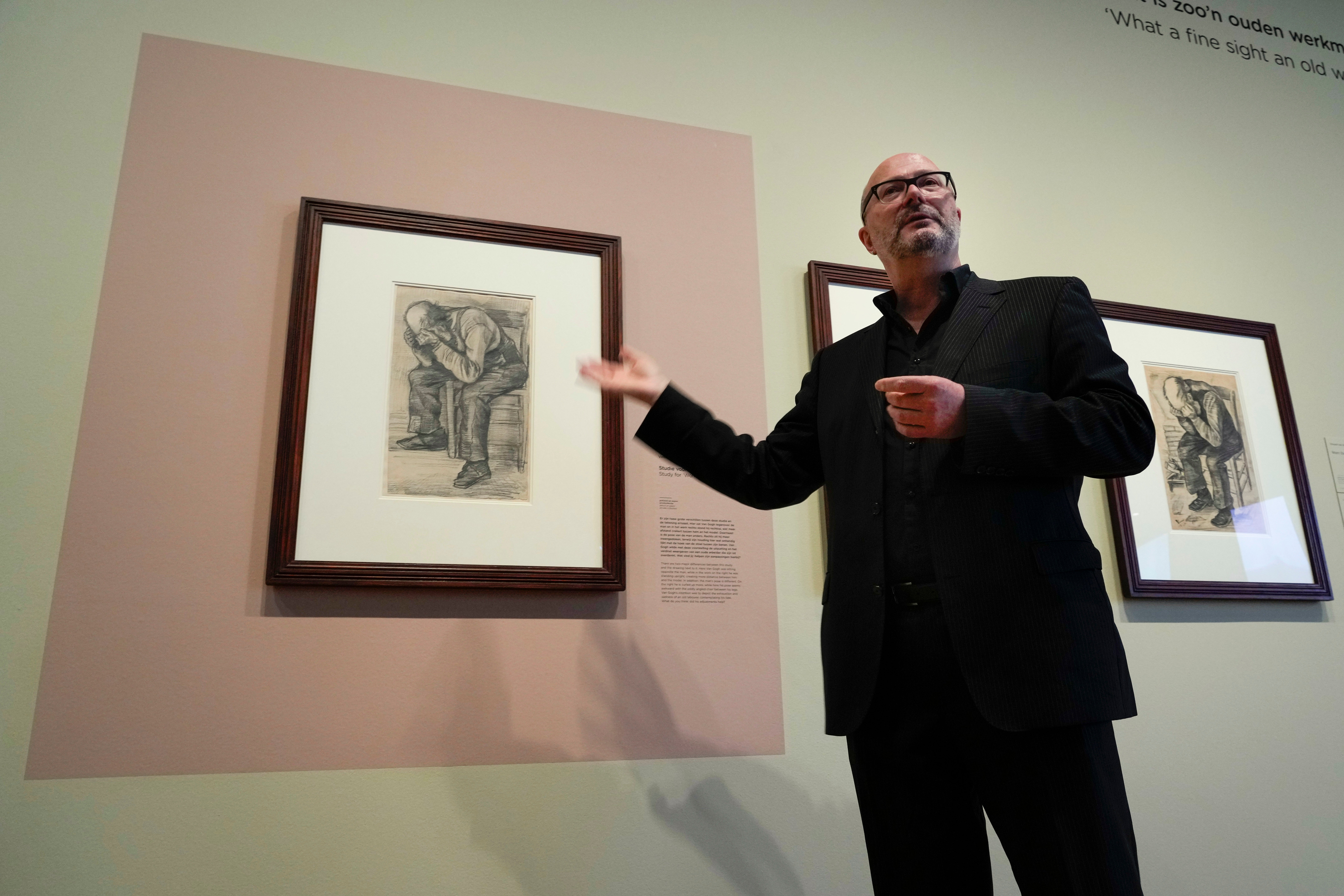‘New’ Van Gogh drawing to go on display in Amsterdam museum
There were even traces of damage on the back linking it to the way Van Gogh used wads of starch to attach sheets of paper to drawing boards

Your support helps us to tell the story
From reproductive rights to climate change to Big Tech, The Independent is on the ground when the story is developing. Whether it's investigating the financials of Elon Musk's pro-Trump PAC or producing our latest documentary, 'The A Word', which shines a light on the American women fighting for reproductive rights, we know how important it is to parse out the facts from the messaging.
At such a critical moment in US history, we need reporters on the ground. Your donation allows us to keep sending journalists to speak to both sides of the story.
The Independent is trusted by Americans across the entire political spectrum. And unlike many other quality news outlets, we choose not to lock Americans out of our reporting and analysis with paywalls. We believe quality journalism should be available to everyone, paid for by those who can afford it.
Your support makes all the difference.A drawing newly attributed to Vincent van Gogh that has never been displayed publicly before is going on show at the Amsterdam museum named after the Dutch master.
The “new” Van Gogh, called Study For ‘Worn Out’, from November 1882, is part of a Dutch private collection and was known only to a handful of people, including a few from the Van Gogh Museum.
The owner, who remains anonymous, asked the museum to determine if the unsigned drawing was by Van Gogh.
Senior researcher Teio Meedendorp said that from the style, to the materials used - a thick carpenter’s pencil and coarse watercolour paper - it conformed to Van Gogh‘s Hague drawings.
There were even traces of damage on the back linking it to the way Van Gogh used wads of starch to attach sheets of paper to drawing boards.
“It’s quite rare for a new work to be attributed to Van Gogh,” the museum’s director Emilie Gordenker said in a statement.
“We’re proud to be able to share this early drawing and its story with our visitors.”
The piece comes from a time in the artist’s career when he was working to improve his skills as a painter of people and portraits by drawing them over and over again.
The museum already owns the almost identical drawing titled Worn Out.
“It was quite clear that they are related,” Mr Meedendorp said.
The study has been loaned to the museum and goes on show from Friday until January 2.
It shows an elderly, balding man sitting, hunched forwards, on a wooden chair, his head in his hands. Even the model’s trousers appear to conform to the English title, with a patch clearly visible on the right leg.
It is a far cry from the vibrant oil paintings of vases of sunflowers and French landscapes that eventually turned Van Gogh - after his death in 1890 - into one of the world’s most famous artists, whose works have attracted astronomical prices at auction.
Instead, it illustrates how as a young artist practising his craft in The Hague in 1882, Van Gogh had to confront an uncomfortable truth.
“He discovered that he lacked the ability to paint people. So he was already drawing them but he liked to paint,” Mr Meedendorp said.
“So in order to be able to paint people as well, he went back to the drawing board.”
Van Gogh, who was famously reliant on his brother Theo’s generosity throughout his life, gave the drawings an English title in a bid to build a bit of name recognition and possibly even land a job at an illustrated magazine.
“In his mind, he had an idea that he would reach out farther than Holland in the end as an artist,” Mr Meedendorp said.
Join our commenting forum
Join thought-provoking conversations, follow other Independent readers and see their replies
Comments